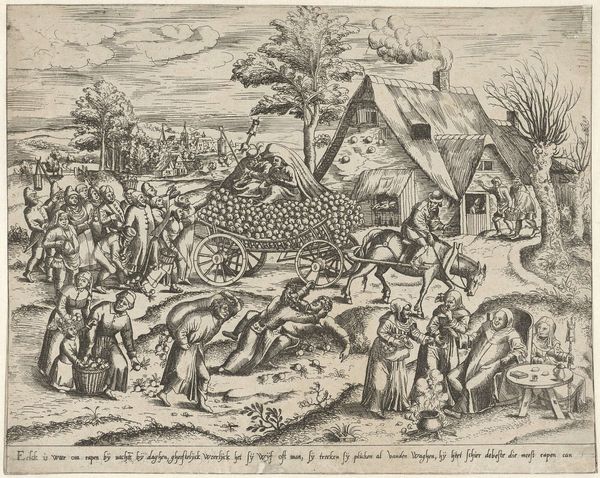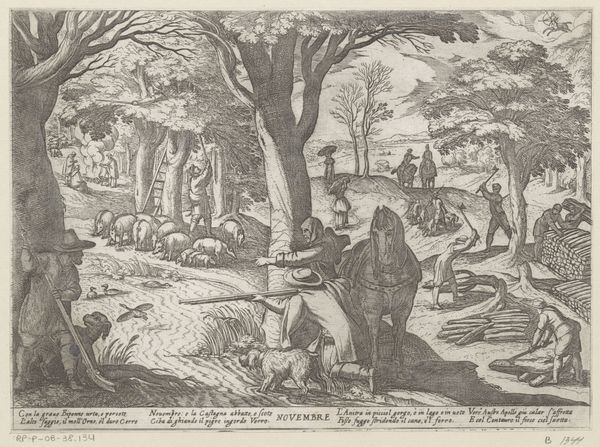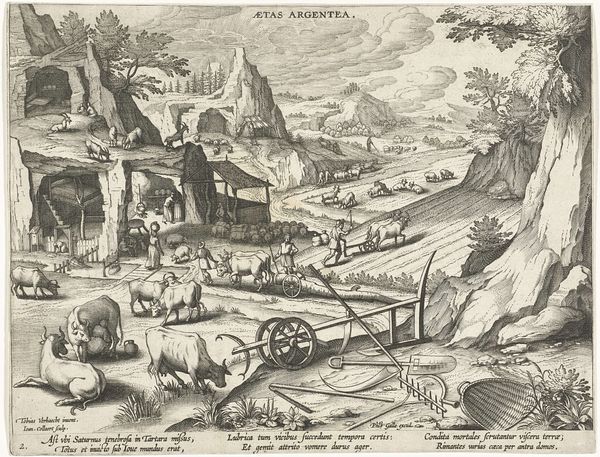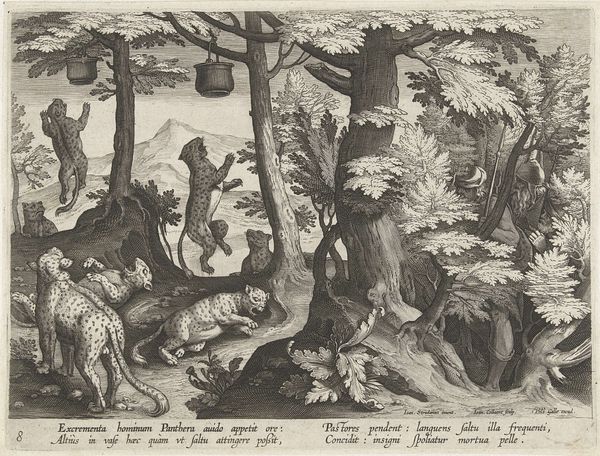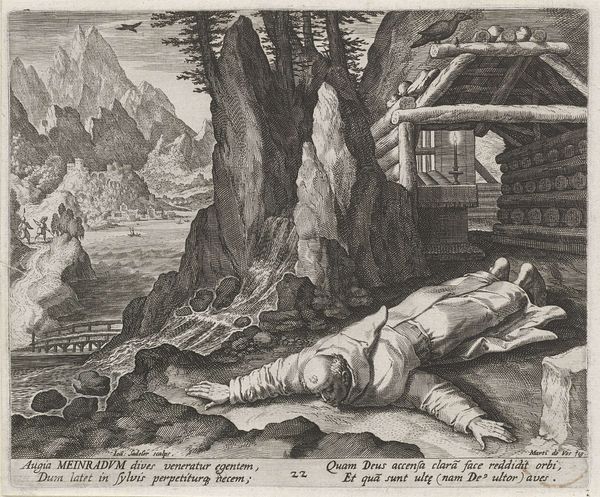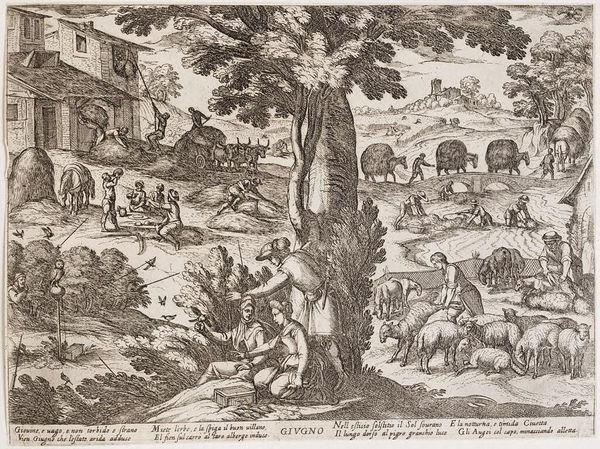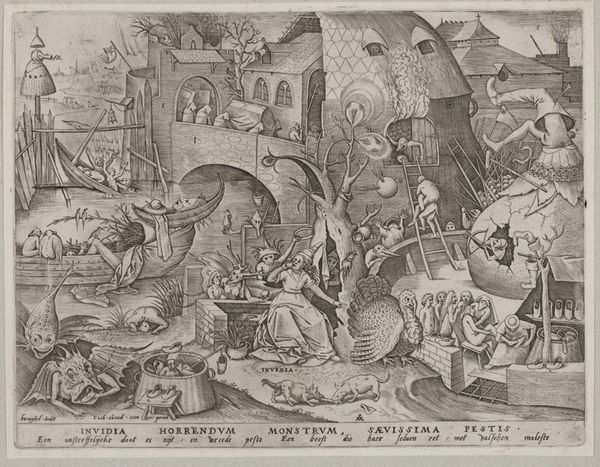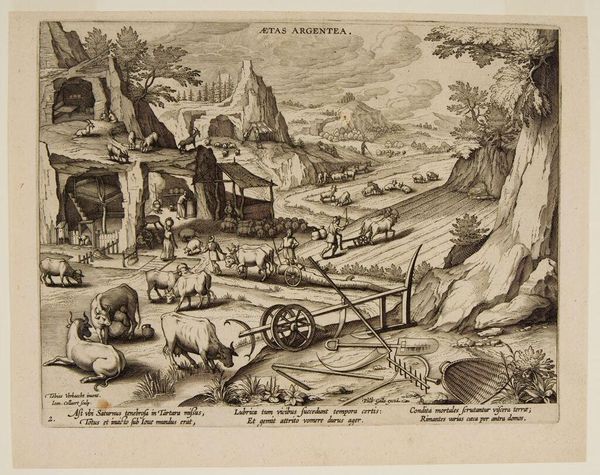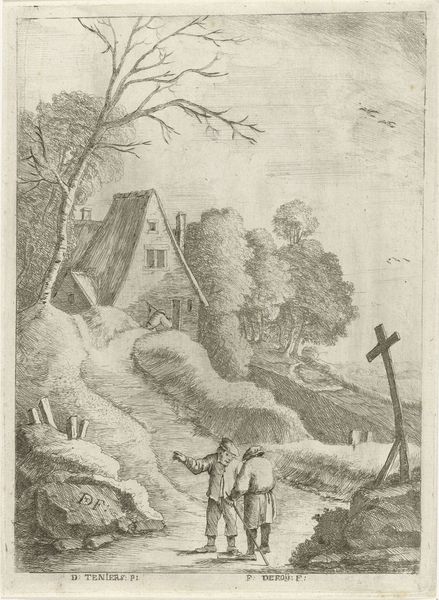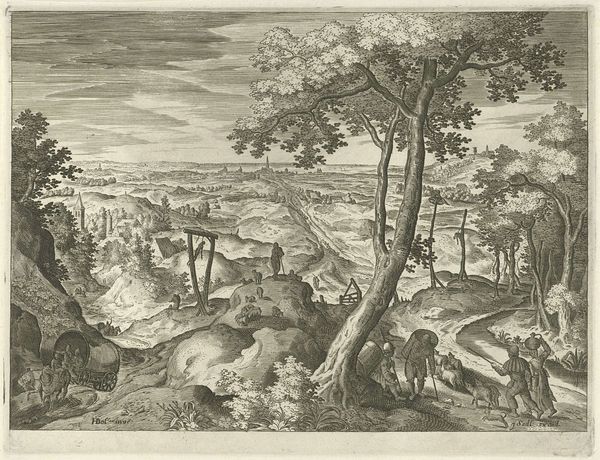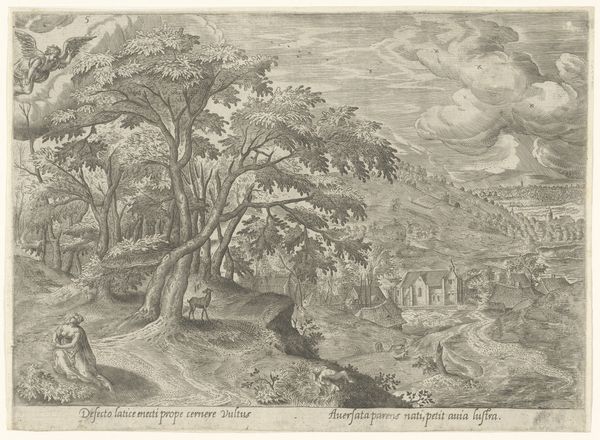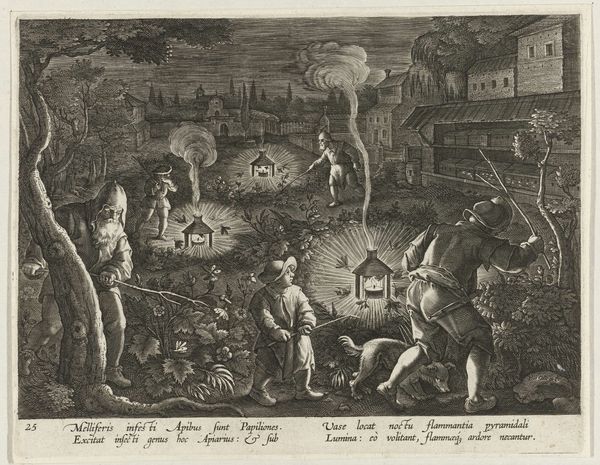
Dimensions: height 141 mm, width 201 mm
Copyright: Rijks Museum: Open Domain
Philips Galle created "Lot and his Daughters" in 1537, and you can see it here at the Rijksmuseum. The etching presents a detailed landscape filled with ruins, with the biblical scene of Lot and his daughters tucked away on the left. Galle masterfully uses line and composition to draw your eye across the scene. Notice how the jagged rocks and twisted tree roots in the foreground create a sense of unease, mirrored in the chaotic, crumbling architecture of the city beyond. This isn't just a depiction of a story; it's a commentary on the instability of human structures, both physical and moral. The precise lines of the etching allow Galle to create intricate textures, from the rough bark of the trees to the smooth surfaces of the ruined columns. Consider how the ruins symbolize the decay of civilization, reflecting a broader interest in the cyclical nature of history during the Renaissance. By embedding the biblical narrative within this landscape of decay, Galle challenges viewers to reflect on the relationship between morality, history, and the impermanence of human achievement.
Comments
No comments
Be the first to comment and join the conversation on the ultimate creative platform.
